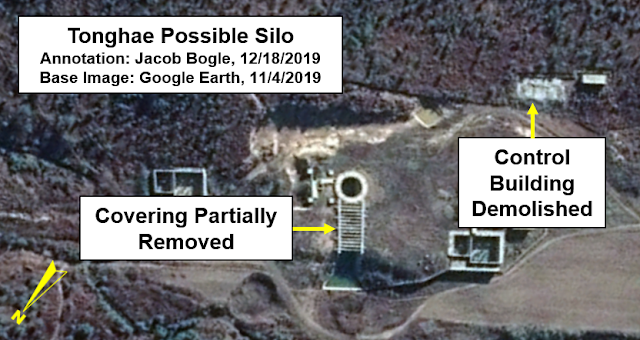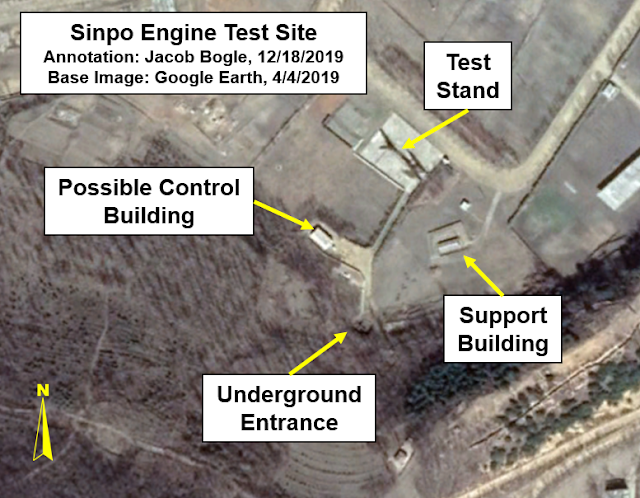On January 22, 2020, North
Korea closed its borders to international tourism (primarily because China is
the biggest source of foreign tourists) and has since begun to consider halting
domestic tourism within the country as well should it be deemed necessary. The
country has also started work, albeit limited, with the World Health
Organization.
Pro-Pyongyang groups like the
Korean Friendship Association have praised these measures and described them as
proof of the regime's care for its people. Indeed, North Korea has a long history
of closing its borders during other outbreaks. The reality, however, is
somewhat more pragmatic and less about the fatherly love of Kim Jong Un.
Like many communist
countries, North Korea built hospitals all over the country in the early years
after its founding and used that to promote the morality of their ideology
compared to the "exploitative" healthcare systems of other countries.
What gets lost in the propaganda is the true nature of those hospitals.
North Korea allegedly has
hospitals in every town and anytime a major health facility is constructed,
you'll see images of the Great Leader walking around and giving
"guidance" regarding every aspect of construction, operation, and
even aesthetic appeal. In recent years there has been a new eye care facility,
a maternity hospital, and a new general hospital constructed in Pyongyang. Even
a large medical device factory near Huichon was completely reconstructed to
improve their products.
At the same time, the country
has long been struggling to contain highly infectious tuberculosis
outbreaks. According to
the World Health Organization (WHO), in 2018 the DPRK had 131,000 new cases of TB, in a country with a
population of 25 million. Some 20,000 died (increasing each year since 2016).
The country's treatment coverage rate is 69%, compared to China's treatment
coverage rate of 92% and Russia's 99%. The United States with its 315 million
people recorded only 9,025 cases.
While TB is indeed very
contagious, its early-stage treatment is relatively straightforward and there
are several outside organizations trying to help, including the Eugene Bell
Foundation which focuses on the more difficult and expensive treatment of
drug-resistant TB (which makes up ~4% of TB cases in the country). Yet, the death rate keeps climbing. The driving
force behind North Korea's inability to control the crisis is
undernourishment compounded by an inadequate medical sector.
Undernourishment has been an
ongoing problem for the country since the early 1990s. Despite the end of a
nationwide famine in 1998, in some provinces as many as 32% of children under 5
years suffer from stunted growth as a result of nutritional deficiencies. This
multi-generational problem even led to the North Korean military being forced
to lower height and weight requirements to reflect this reality in order to
meet recruitment demands.
Besides stunted growth, lack
of adequate food can greatly increase
one's risk of illness. Something like the annual flu becomes a much harder
fight and fatality rates for at-risk populations (the very young, old, and
those with other illnesses) skyrocket. This fact is also mirrored in the fatality
rates of other coronaviruses such as SARS and MERS. The average death rate for
SARS was 11% but jumped to nearly 50% for those over the age of 65.
Such disparities in fatality
rates apply to all diseases and can be seen in all countries, but the
additional stress of not having enough food or bodily energy reserves magnifies
the risk of both getting infected and of dying.
This brings me back to the hospitals
of North Korea.
The state of North Korea's healthcare infrastructure is among
the least capable and prepared in the world. Local "hospitals" would
hardly be recognizable to many westerners and are little more than clinics
where you're just as likely to find odd assortments of herbs as you are to find
medicine. This reliance on traditional therapies in a modern,
"scientific" socialist state is because even basic medical supplies
are in short supply or nonexistent in rural areas.
Unfortunately, international
actions against the North Korean government have only worsened the health
crisis. After a new round of sanctions, the country's only WHO-certified
pharmaceutical manufacturer closed down in
2017.
This shortage of fundamental
medicines like antibiotics and pain relievers only serves to exacerbate
outbreaks of disease and lowers recovery outcomes.
The only moderately
well-provisioned hospitals in the country are in provincial capitals and the
national capital of Pyongyang. However, these services are not free. Regardless
of the legal guarantee to free healthcare, patients have to pay for everything
from the needle used in an IV to providing their own meals if
hospitalized. This is out of reach for the average citizen. Making things worse
is the rationing of medications and equipment. The very best is held back for
use only by the county's tiny elite and to be used by foreigners (who also have
to pay).
In view of North Korea's
inability to provide adequate care to their own citizens without international
support, let alone during an outbreak of a new virus, the decision to halt
foreign tourism becomes about the fear of national survival. However, nations require more than just people to survive. The other thing to
consider when trying to understand the actions taken by Pyongyang, is the fact
that only tourism was stopped. Not trade.
Each year tens of thousands
of Chinese tourists visit the country. But each year countless more thousands
of North Korean citizens come in contact with further thousands of Chinese
traders and businessmen. While the risk of an outbreak could threaten
the North Korean state, ending trade with China would end the
state. Thus, Pyongyang took a calculated risk. Lower the chances of the virus
spreading by ending tourism but allow the risks stemming from trade because the
country would quickly come to a halt without Chinese goods and the foreign
currency generated through trade.
All of this comes not long
after North Korea announced it would seek to create a medical tourism sector. This announcement came last year and was intended to begin
this year. In a country where antibiotics are largely absent, aspirin is held
dear, and where rumors of surgeries being performed without anesthesia
routinely pop up, the regime thought it was best to use their medical resources
to give outsiders new dental work and eye lifts.
The desire to become a
medical tourism destination is rooted in the desire of the regime to make the
money it needs to survive. Likewise, allowing person-to-person trade across
borders is about maintaining the system. The risk of spreading infections is a
secondary consideration. The real motivation is regime survival.
The state can survive a
short-term hold on tourism, it can also survive having a few people receive
amputations when a $0.05/dose antibiotic could have saved a limb or having a
few people get sick from a virus which is much less deadly than SARS. The state
can't survive, however, without the cash needed to fund its military or to buy
the loyalty of elite families, and Pyongyang is still busy ensuring those activities
continue with as little disturbance as possible.
I would like to thank my current Patreon supporters: Kbechs87,
GreatPoppo, and Planefag.
--Jacob Bogle, 1/30/2020
























